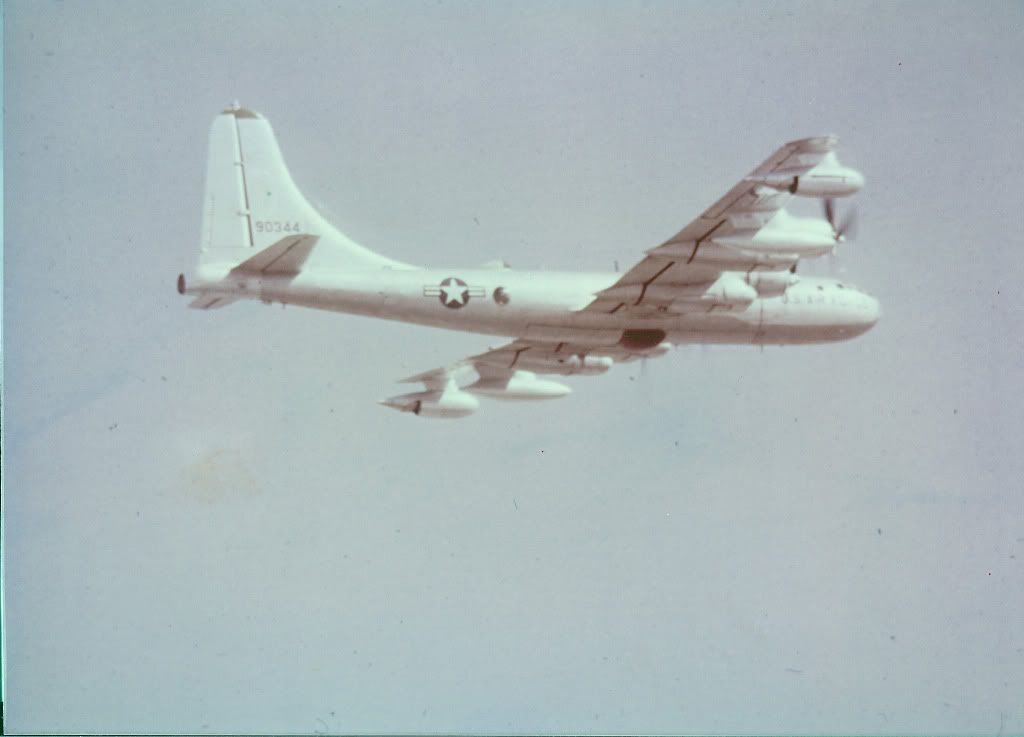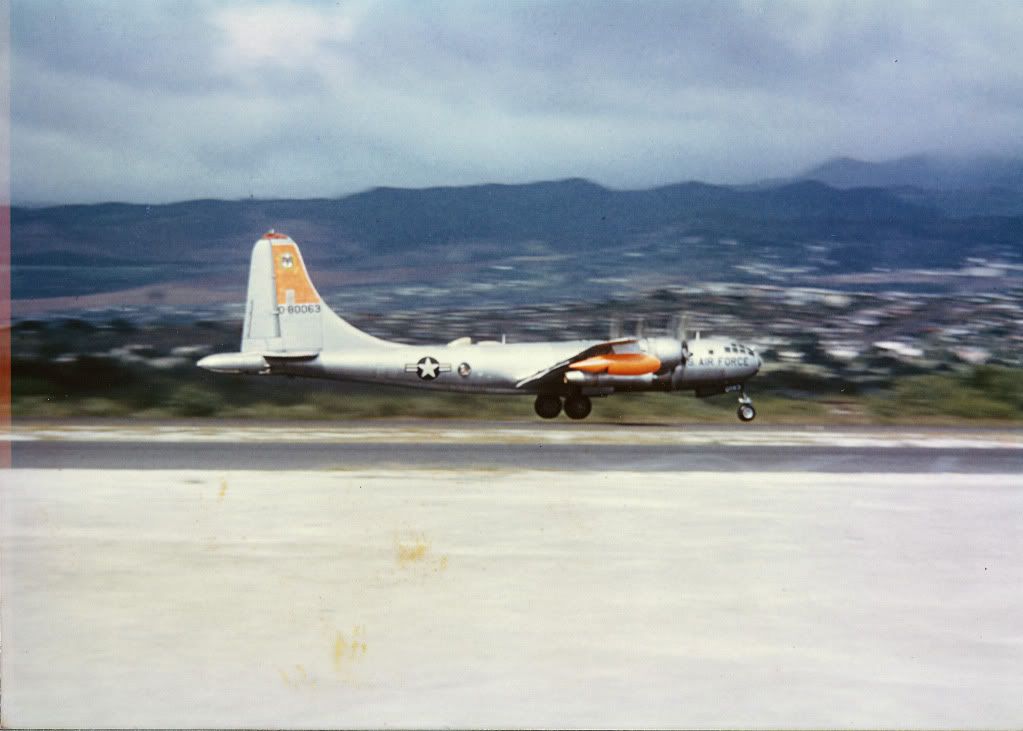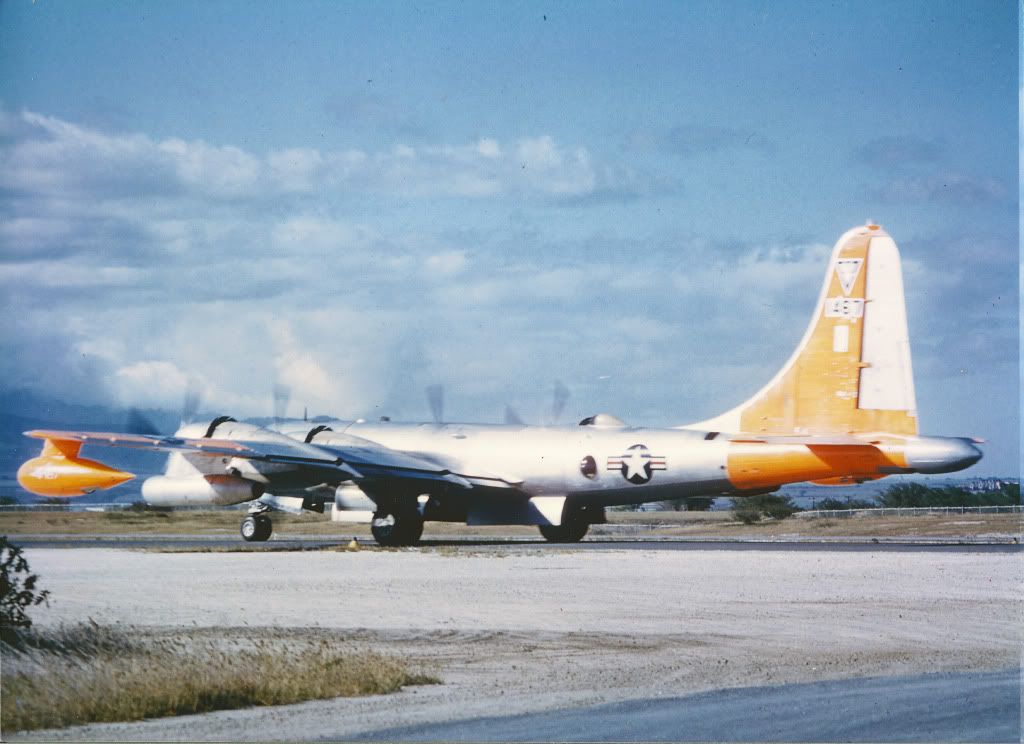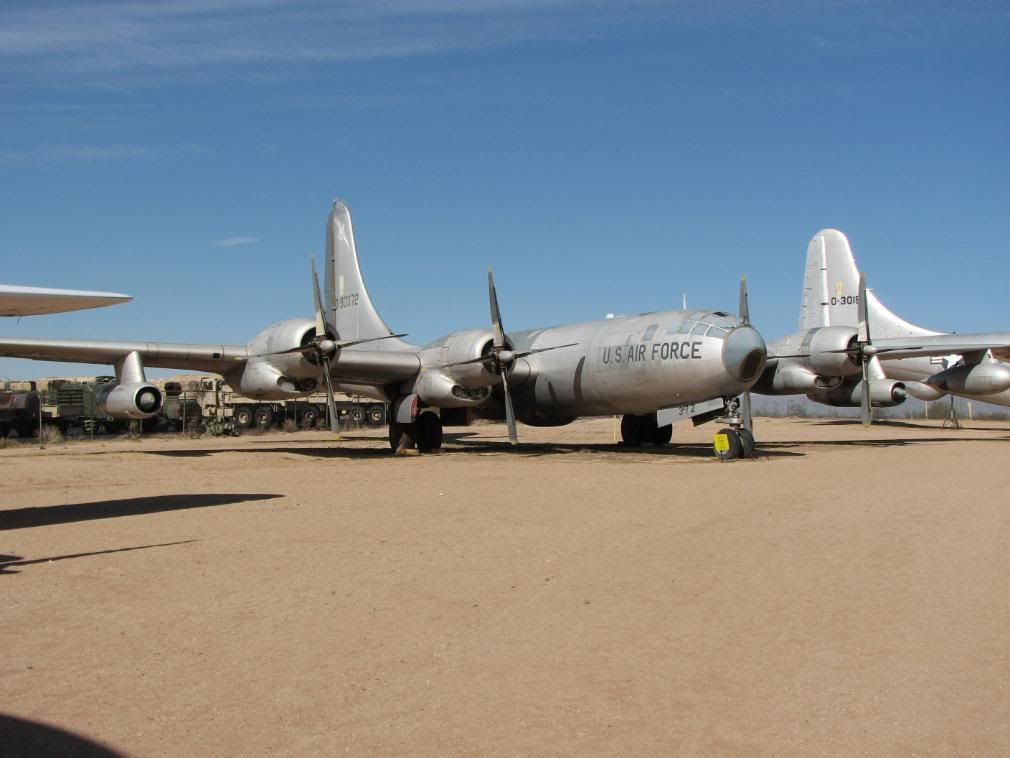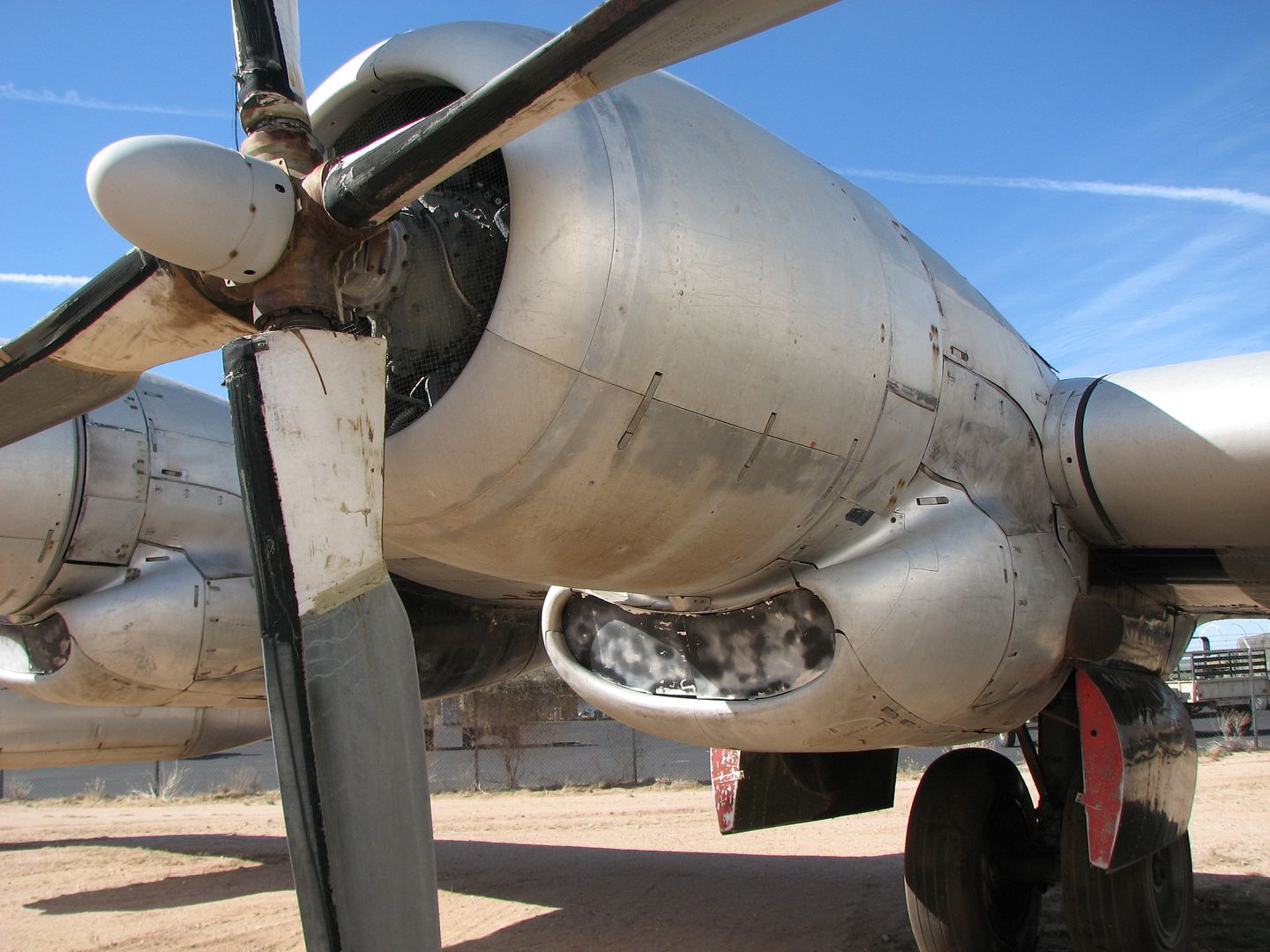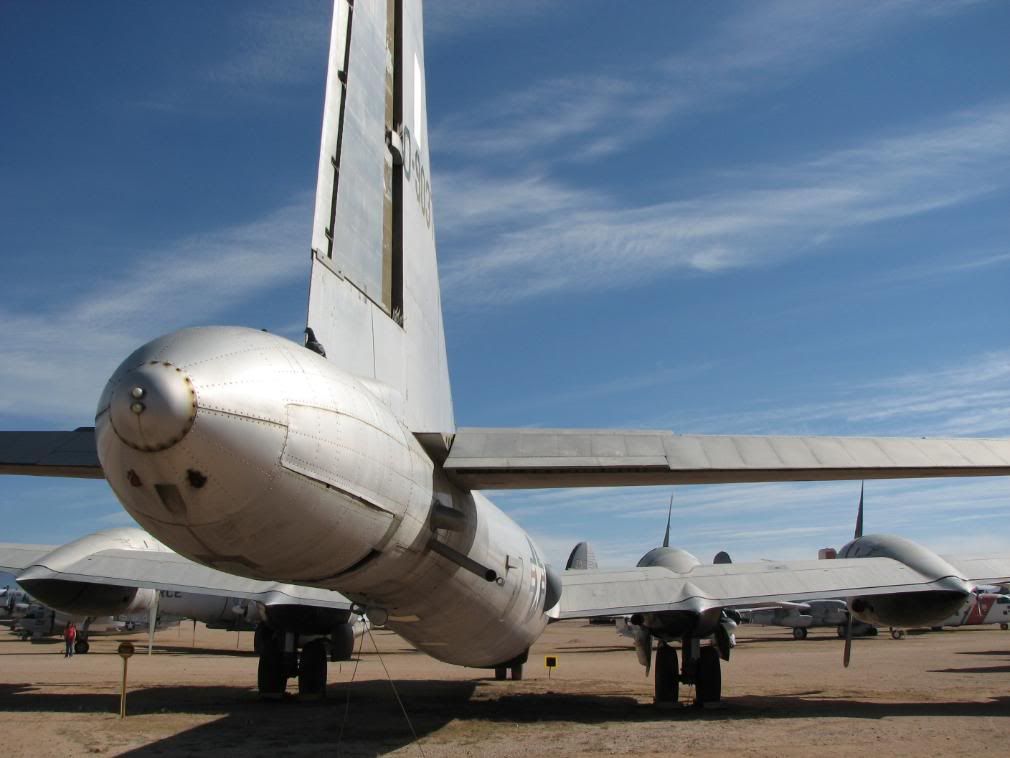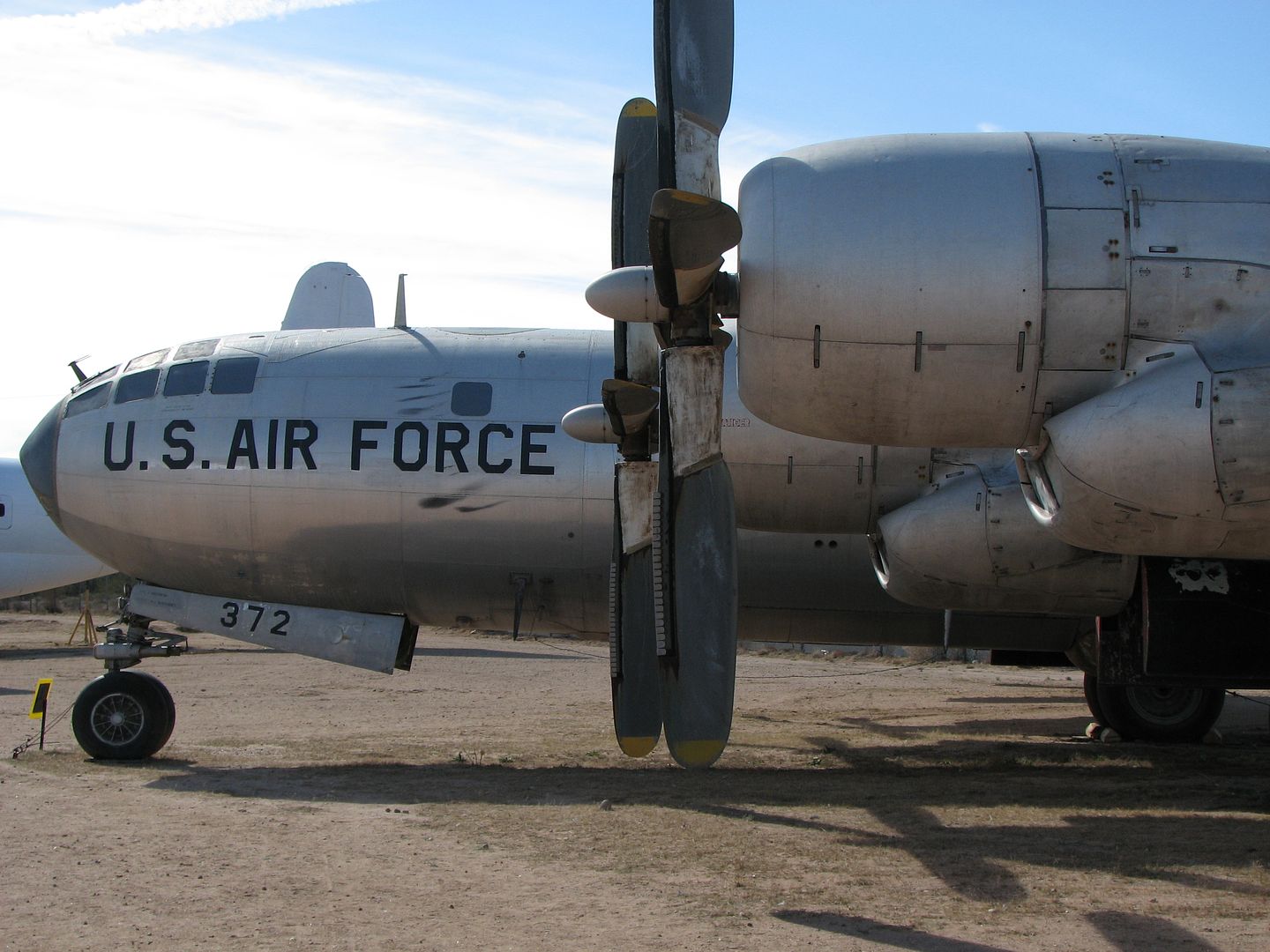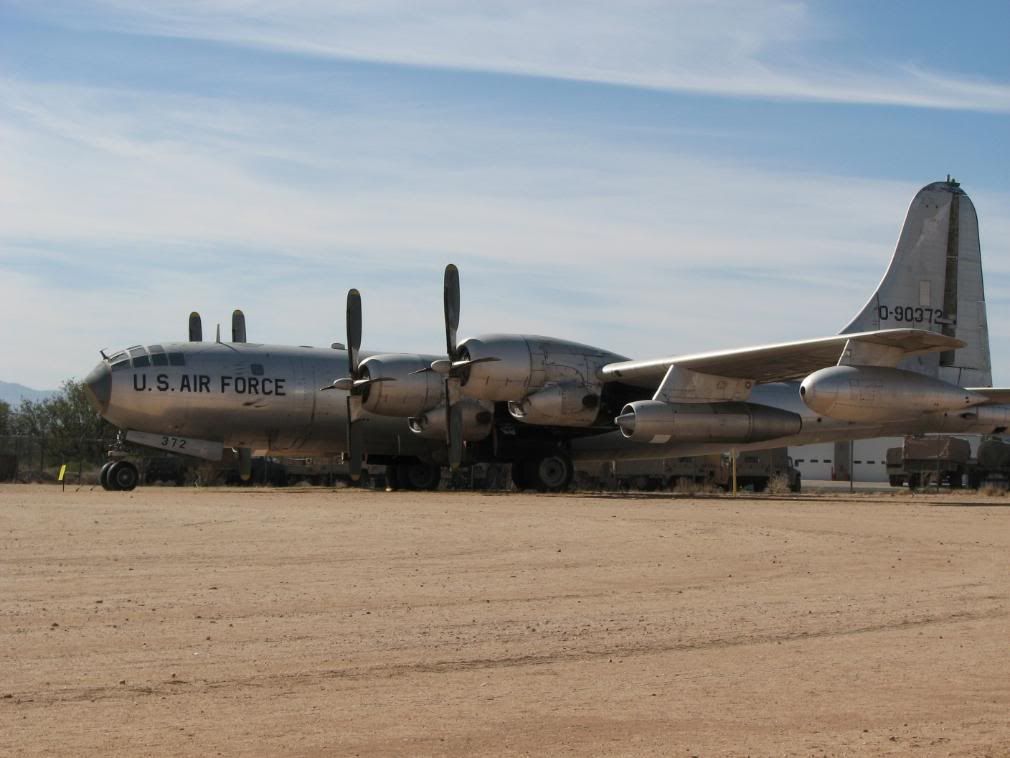This is a rather lengthy article, but it explains that complicated grapple hook and hose method of air to air refueling.
The designation KB-29M was assigned to 92 B-29s that were converted to aerial tankers using the British-developed hose refuelling system. In addition, 74 B-29 aircraft were converted as receivers for this system under the designation B-29MR. In retrospect, this hose refuelling system was unbelievably awkward and cumbersome, and it is a wonder that it worked at all. That it was so successful is a testament to the courage and ability of all concerned.
The primary goal of the project was to extend the range of the B-29 fleet to make it possible to attack targets in the Soviet Union with nuclear weapons.
The B-29MR conversion was carried out by removing all of the B-29 gun turrets and their associated equipment except the tail turret. On some of the conversions, even the left and right gun sighting blisters were removed and replaced by small ten-inch diameter windows to cut down on the drag. The rear bomb bay was fitted with an extra fuel tank of 2300 gallon capacity, and the forward bomb bay was modified to carry an atomic bomb. In addition, extra rendezvous equipment was installed to aid in the tankers and bombers being able to locate each other. The B-29MR had a refueling nozzle receptor installed on the lower right side of the fuselage, approximately at the location where the lower aft gun turret had been located prior to its removal. The receptor was connected to plumbing that transferred fuel to the gas tank system. A 450-foot cable (known as the hauling line) emerged from the center of the nozzle receptor. This cable was controlled by a hydraulic winch that was operated by a crewman sitting in the tail turret position. The end of the cable held a dish-shaped metal pan equipped with grapnel hooks. The winch operator had no way of seeing what was going on outside his immediate station, and had to rely on guidance by an observer (usually the radar officer) sitting in the tail gunner’s position.
Similar changes were made to the KB-29M tanker aircraft. All of the gun turrets were removed, including the tail turret. The bomb bay of the KB-29M was fitted with a separate fuel tank holding 2300 gallons. This tank was also plumbed into the normal aircraft fuel system so that fuel from it could also be transferred to the receiver aircraft. The KB-29M tanker aircraft carried a system of hoses, reels, winches and fuel pumps needed for the transfer of the fuel to the receiver aircraft. A power-driven reel for the refuelling hose was installed in the rear fuselage at the position where the lower aft turret had been located prior to its removal. The KB-29M also had a cable and associated winch (known as the contact line) that was used to assist in the setup of the connection between the two aircraft.
During the refuelling operation, the tanker aircraft flew in formation slightly above, to the left, and to the rear of the receiver aircraft. In order to initiate the contact, the tanker aircraft let out about 300 feet of contact line behind it. There was a 50-pound weight at the end of the contact line cable, so it hung almost straight down from the tanker. At the same time, the receiver aircraft let out about 300 feet of hauling line cable that extended from the refuelling receptacle located underneath the tail on the starboard side. With the grapnel pan at the end of the MR’s hauling line, the cable trailed almost straight back from the aircraft. With both lines fully extended, the tanker aircraft would then cross over to the right side of the MR, and the two cables would make contact. The operator in the tail turret of the tanker aircraft would then pull in his contact line cable, and the grapnel hook on the end of the MR’s hauling line would ensure that a positive connection was made. The tanker aircraft would pull the contact line all the way into the aircraft. With the end of the MR hauling line cable now in the tanker, the operator removed the grapnel pan from the end of the hauling line and attached the hauling line to the nozzle at the end of the refueling hose. The operator in the tanker aircraft then began to let out the hose, and at the same time the winch operator in the MR receiving aircraft started to pull in the hauling line. The hose and nozzle would be pulled around a 300-foot curve trailing behind the two aircraft, the reel unwinding as the hose extended. Once the hose nozzle reached the MR, it was mated with the nozzle receptor and locked into place.
While the receiver aircraft hauled in the hose, there was a very critical sequence in which if not followed correctly could—and sometimes did—result in loss of the hose. At the point when the hose came “coming 'round the bend”—the winching had to be accelerated to keep the hose from whipping. If severe whipping did occur, the entire hose system usually had to be jettisoned.
After the nozzle of the hose was firmly seated in the receptacle of the MR aircraft and locked, a signal was sent to the tanker aircraft (which was now above and behind the receiver) that contact had been made and that fuel could now be transferred. Fuel then flowed via gravity from tanker to receiver aircraft. Incoming fuel was usually directed into the 2300-gallon rear-fuselage tank, but it could also be directed into the other tanks in the regular fuel system.
Once the fuel transfer was complete, the MR operator unlocked the nozzle and started letting out his hauling line cable. The tanker aircraft reeled in the entire length of hose, and the operator in the tanker aircraft disconnected the MR’s hauling line from the hose and reattached the grapnel pan. The pan and hauling cable were then pulled back into the MR aircraft.
The feasibility of the system was first demonstrated on March 28, 1948 by two converted B-29s. Water rather than fuel was transferred during this test, but full fuel-flow trials were made in May of 1948. Encouraged by this success, the Air Force then ordered conversion of 92 B-29s to serve as tankers using this system under the designation KB-29M. Boeing’s Wichita Plant 2 was reopened in 1948 to handle this conversion. As part of the program, another 74 B-29s were modified as receiver aircraft for the KB-29M tankers. Initially, the designation B-29L had been reserved for this version, but they were designated B-29MR instead.
In the U.S. Air Force, the 509th and 43rd Air Refueling Squadrons were created during the summer of 1948 to operate the KB-29M tankers, although it was almost January of 1949 before both these squadrons were fully manned. Both squadrons operated KB-29M tankers, with the 509th based at Walker AFB, New Mexico while the home field for the 43rd ARefS was Davis-Monthan AFB, Arizona. They practiced inflight refueling with B-50A bombers. During January and February of 1949 this technique was practiced with B-50’s named GLOBAL QUEEN, LUCKY LADY II, LONG RANGER and a few others. Between February 26 and March 2, 1949 the B-50A LUCKY LADY II (serial number 46-0010) made the first nonstop flight around the world while being refueled in flight by 8 KB-29M’s of the 43rd Air Refueling Squadron. 94 hours were taken for the 23,452-mile journey.
Although the hose refuelling system proved to be feasible, in practice the system had the disadvantage in taking a long time to make the contact and engage the hoses. Once contact was made, the rate of fuel transfer was slow, and the hoses provided a lot of aerodynamic drag which limited the airspeed. Consequently, the hose system was used for only a few years before it was replaced by the Boeing-developed flying boom system.
